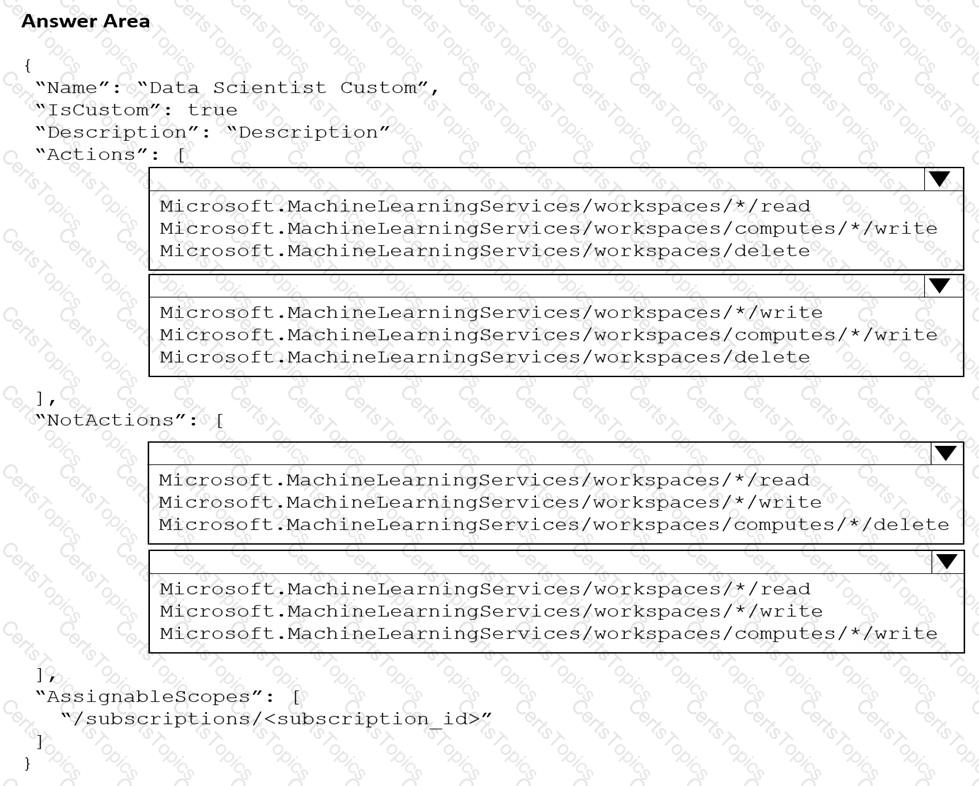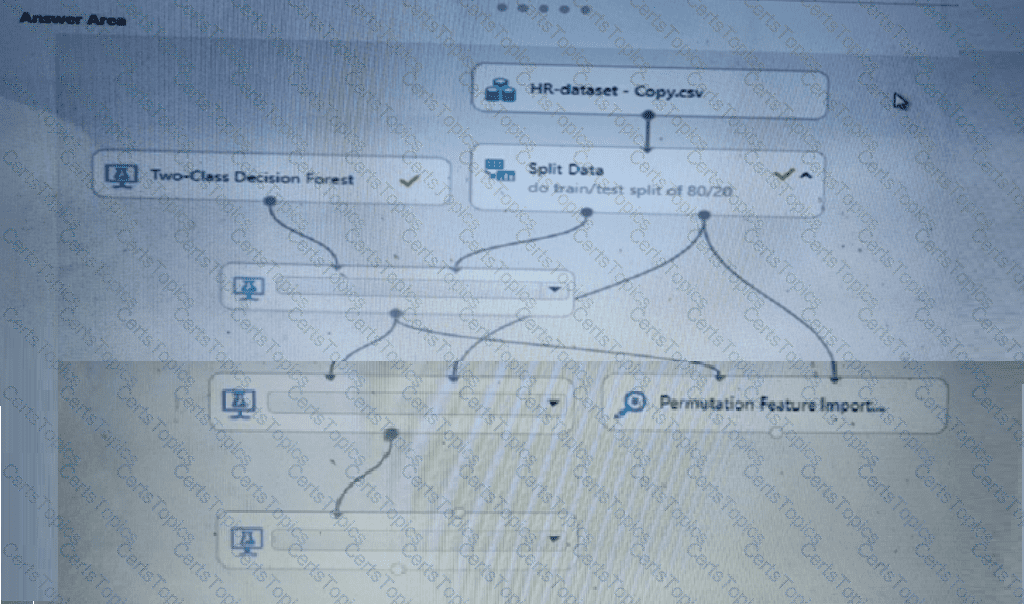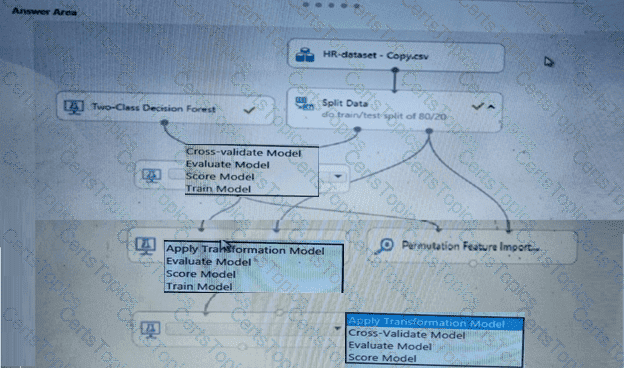You create a binary classification model.
You need to evaluate the model performance.
Which two metrics can you use? Each correct answer presents a complete solution.
NOTE: Each correct selection is worth one point.
You are the owner of an Azure Machine Learning workspace.
You must prevent the creation or deletion of compute resources by using a custom role. You must allow all other operations inside the workspace.
You need to configure the custom role.
How should you complete the configuration? To answer, select the appropriate options in the answer area.
NOTE: Each correct selection is worth one point.

You use Azure Machine Learning studio to analyze an mltable data asset containing a decimal column named column1. You need to verify that the column1 values are normally distributed.
Which statistic should you use?
You create a binary classification model using Azure Machine Learning Studio.
You must use a Receiver Operating Characteristic (RO C) curve and an F1 score to evaluate the model.
You need to create the required business metrics.
How should you complete the experiment? To answer, select the appropriate options in the dialog box in the answer area.
NOTE: Each correct selection is worth one point.

